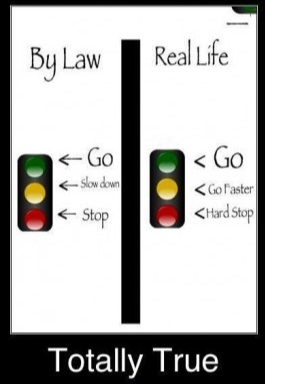
Defensive Driving: Mitigating Risks for a Safer Journey
The Importance of Defensive Driving
Life’s fragility means we must actively work to protect ourselves, especially on the road. Defensive driving is a practice that involves anticipating potential dangers and planning to avoid them. By being proactive, you can significantly reduce the risks associated with driving, particularly in high-stress environments like congested city freeways.
Understanding and Mitigating Risks
#Motorcycling on Busy Freeways
Motorcycling, especially during rush hours in a bustling city like Phoenix, Arizona, poses unique challenges and risks:
– Visibility: Motorcyclists are less visible to drivers compared to cars. This makes it crucial to stay alert and aware of your surroundings.
– Speed and Space Management: Maintaining a safe following distance is vital to give yourself ample time to react to sudden stops. It’s also essential to avoid being tailgated by other vehicles.
– Lane Changes: Sudden lane changes by drivers can be hazardous. Staying out of congested clusters and keeping an open lane beside you can provide an escape route if needed.
Route Planning for Safety
#Choosing the Safer Route
Selecting a safer route can significantly lower the risk of accidents:
– Freeway vs. City Streets: On city streets, intersection collisions are more common. Freeways, though faster, present risks like sudden braking and lane changes. Weigh these risks and choose the lesser evil based on your specific route and traffic patterns.
– Avoiding Congestion: Heavy traffic increases the likelihood of sudden stops and erratic lane changes. By selecting a route with lighter traffic, you can reduce these risks.
Practical Example: Phoenix Commute
For instance, commuting from downtown Phoenix involves navigating high-traffic areas. Here’s a strategy to mitigate risks:
– Initial Route: The congested freeway stack interchange on Interstate 10 and SR51 is hazardous. Lane changes in heavy traffic create significant risks for motorcyclists.
– Alternative Route: A quieter street around downtown allows entry onto SR51 south of the interchange, where traffic gradually increases. This route enables safer lane changes and avoids the most dangerous areas.
Defensive Driving Techniques
- Awareness and Anticipation: Constantly monitor the traffic around you. Be aware of drivers’ behaviors two lanes over and anticipate their actions.
- Space Management: Always maintain a buffer zone around your vehicle or motorcycle. This space gives you time to react to sudden stops or lane changes.
- Lane Positioning: Avoid staying in drivers’ blind spots. Position yourself where you are most visible and have the best view of the road ahead.
- Speed Control: Adjust your speed to match the flow of traffic while maintaining a safe following distance. Avoid sudden accelerations or decelerations that could surprise other drivers.
- Escape Routes: Always identify potential escape routes in case you need to avoid an obstacle or an erratic driver quickly.
Conclusion
Defensive driving is about thinking ahead, anticipating potential dangers, and making informed decisions to minimize risks. By carefully planning your routes and adopting defensive driving techniques, you can significantly enhance your safety on the road. Whether you’re navigating the busy freeways of Phoenix or any other high-traffic area, these strategies can help protect you from accidents and ensure a safer journey.
Dismiss your ticket and master the art of staying ticket-free with us. Since 2007, we’ve been the trusted solution for dismissing Arizona Traffic Tickets hassle-free. Upon completing our course, your ticket charge will be dismissed, with no points on your record, and no need for a court appearance.
